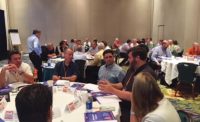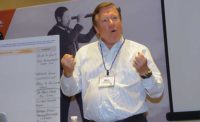On Monday, Sept. 10, the American Supply Association embarked on a mission to ensure that the association’s members of 2027 will remain viable and successful in spite of myriad challenges facing each company in the form of technology that is changing at an exponential rate, a decline in quality employees looking to build careers in the PHCP and PVF industry, and an industry whose baby-boomer leaders find it increasingly difficult to keep up with challenges coming at them faster than they can find solutions.
Issue Strategic Action Teams
Acting on the alarming findings from a Think Tank commissioned by ASA’s Executive Committee to think about the association members of 2027 and the challenges they will face in the next decade, ASA, with the support of its regional affiliates, engaged three issue-strategic action teams whose mission is to dive deep into each issue, identify how the issues will challenge the future viability and success of members and to identify what solutions will be necessary to ensure the survival of our members. Each team has been challenged to complete their work and present to the association’s Winter Leadership Meeting in February in Southern California the solutions to the three most pressing issues facing
our industry.
Twenty-one members representing every sector of the association, supported by teams of ASA staff split between three teams, began their intense and demanding meeting schedule, facilitated by longtime industry consultant and speaker Dirk Beveridge and his UnleashWD team at the O’Hare Hilton Hotel. At the time this article was written, both the Human Capital and Technology ISAT teams have met.
Rethinking requirements
Members of the Human Capital Team looked at how the aging labor force, the lack of women in the industry, the lack of diversity and the fact that less than 4% of the labor force being under the age of 26 could impact the future viability of the membership. They debated how the future need of labor could be mitigated by the rapid advancement of artificial intelligence such as laborless warehouses, driverless forklifts and trucks, and if distributors could move quick enough to solve the issue before it became critical and impactful to their success.
How should we as an industry rethink our requirements for labor with regard to educational background as well as work ethic? Would this be viable to solve our problems? Openly, members discussed if requiring a four-year degree would equate to success in the field or would an employee that is driven, but backed with a two-year degree, be preferential. How would we connect with this new labor force and who was best positioned to lead also was discussed, laying the foundation for subsequent meetings of the Human Capital ISAT team.
Challenges ahead
Members of the Technology ISAT team discussed how technology could be industry-killing and cited innovation in the transportation industry and how quickly Uber and Lyft have decimated the taxicab industry almost overnight. Many members of the team discussed the challenges that Amazon represents which is the threat we see coming, but discussions quickly shifted to a realization that it wasn’t the threat from Amazon that bothered them the most but rather the threats that we don’t see coming that could be infinitely more of a game-changer than the challenges that we see. What’s coming at us that we just don’t see coming?
Over the next four months, each team will meet to map out how the national association can drive programs and services that will address each of the three mega issues and position members to lead as both existing and new challenges emerge to attack traditional PHCP and PVF markets and partners. Each team will present their reports to the ASA Winter Strategic Leadership Meeting at the beginning of February in Laguna Beach California.




